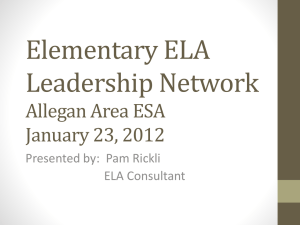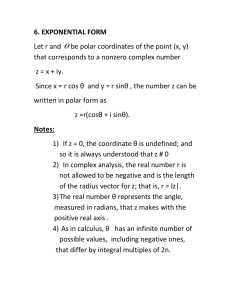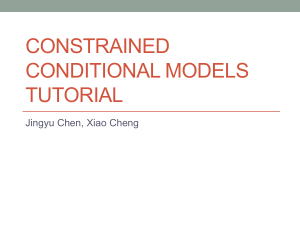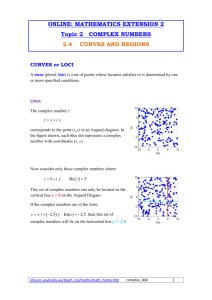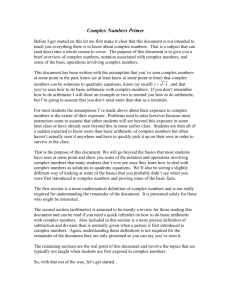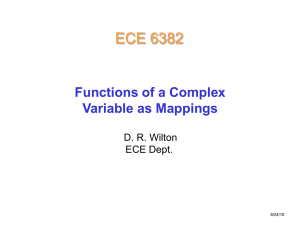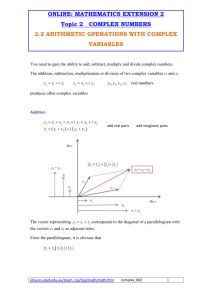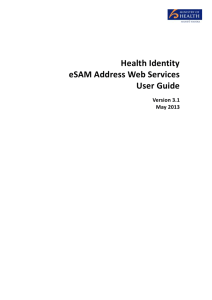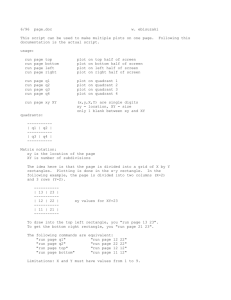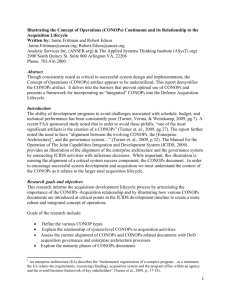Safety Assessment
advertisement
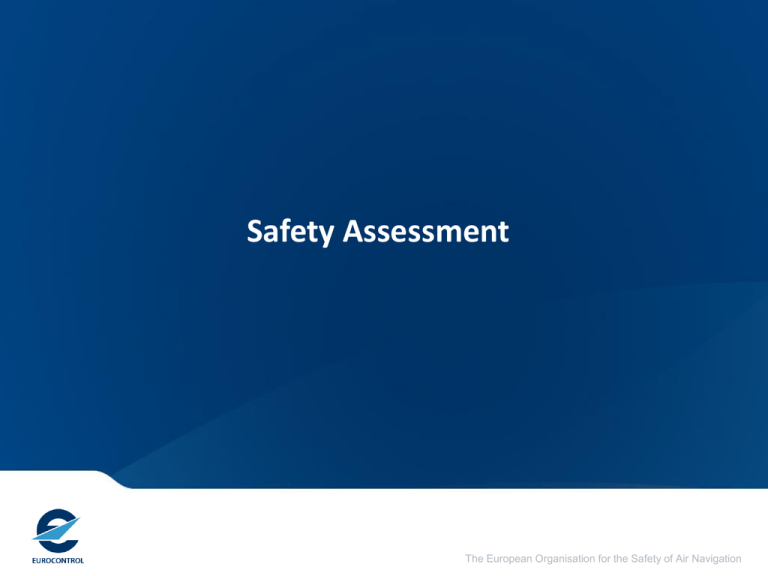
Safety Assessment Safety Assessment The European Organisation for the Safety of Air Navigation Safety Assessment Safety Assessment is an EC1035/2011 requirement EC1034-2011 helps understanding which changes require a formal assessment that needs NSA review Experience has shown that the “Safety Consideration Process” provides good understanding of the changes Safety Assessment The Only acceptable means of compliance to ESARR4 (~EC1035/2011) as of today is SAM (with limitations) SAM is a toolbox mainly known for its FHA-PSSASSA processes - Functional Hazard Assessment - Preliminary System Safety Assessment - System Safety Assessment SAM most suitable for hardware changes for which we can have an influence on the design, usage much more difficult for many other changes, procedures, airspace etc… Safety Assessment eSAM • eSAM V2.1 helps navigating through the documentation set of "ANS Safety Assessment Methodology"; • http://www.eurocontrol.int/safety/public/site_prefer ences/display_library_list_public.html#17 Safety Assessment OPS Concept (concept elements) Safety consideration report Argumented rationale for not going further Safety considerations N Brainstorming Go further? Y Initial safety argument Initial Safety argument (termination) Argumented rationale for not going further N First attempt to construct Safety Argument (high level) Go further? Y Safety Plan Safety assessment (activities as per Safety Plan) SAFETY CASE Safety Case Report Translation of initial argument into required activities Conduct of activities Production of the report Safety Assessment Safety considerations process Safety Assessment Safety considerations No operational concept Scope unclear Missing assumptions Safety requirements unrealistic Bad arguments What are the needs for change? What are the new system boundaries? (OPS Concept) Are there (initial) assumptions? (OPS Concept) Are (Initial) Safety requirements realistic? Will it be possible to build an argument? Little or no evidence What evidence could be provided? Errors in calculations Would it feasible and beneficial to quantify? No concept of operations Impact at boundaries not addressed Hazards classification questionable SAFETY BENEFITS OF NORMAL OPERATIONS? How shall the new system/change be operated? What are the interfaces? What impact foreseeable? How and who will assess hazards? In what way is the proposed operational concept different from current one? Safety Assessment How did we do things so far? Good Specifications We have tested the system System OK We have We have RevisedWhat trained wethe used procedures staff to We have a fall-back do system Staff OK if What we concluded OK breakdown New center will start operations Decision to go operational On XX/XX/XX We have temporary procedures Switching over should be OK Safety Assessment What are we asked to do today? Good Specifications We have tested the system System OK Good Specifications We have tested the system We have Revised procedures It will be safe to We have We have provide operations trained the Contingency from staffnew center measures Staff OK We have Revised procedures OK if breakdown New center We have We have will start operations trained the Contingency staff measures On XX/XX/XX We have temporary procedures Switching over should be OK We have temporary procedures Safety Assessment OPS Concept (concept elements) Initial safety argument Is there anything that we know we will only be able to prove after implementation but we are confident we are right Caveats Arg0 We need to demonstrate that change will be safe Criteria for safety (ESARR4) Why do we want to do this change? CONOPS How are we going to do that? Arg1 Safe by design How are we going to do that? Arg2 Safe after implementation How are we going to do that? Arg3 Safe to migrate operations How are we Life cycle going to do that? Safety Plan Arg4 On-going operations will be safe How are we going to do that? Safety Assessment Safety Assessment for DQR [DQR-REQ-300] The safety assessment process to support the establishment of new or updated data quality requirements shall be documented and include all the necessary steps to derive the data quality requirements to ensure data of sufficient quality are provided to meet the intended use for each data item under consideration, as a minimum: Safety Assessment Safety Assessment for DQR 1. Identify all relevant uses for the aeronautical data item or dataset. 2. Conduct Hazard Identification and Analysis. 3. Determine accuracy and resolution requirements taking into consideration: a) The functionality, performance and availability required by the intended use to achieve an acceptable level of safety. b) The inherent limitations in originating the data item or dataset. 4. Determine the data integrity level, based on the results of step 1 and step 2, for the most stringent use. 5. Consider the necessity to assign requirements for the ability to determine the origin of the data, other than the ones already defined in Annex I Part C of Commission Regulation (EU) 73/2010. 6. Consider the necessity to assign requirements for the level of assurance that the data is made available to the next intended user prior to its effective start date/time and not deleted before its effective end date/time, other than the ones already defined in Article 7(3) and Article 7(4) of Commission Regulation (EU) 73/2010. Safety Assessment Initial safety argument Let’s have a look at the MS-Visio figures Safety Assessment Change/Project using the « data » is « safe » Arg – 1 Design of the « Change/ Project » is safe … Further development of Arg-1 ... Arg – 1.X.X.Y.N Data and associated quality requirements are “adequate “ “ Arg – 2 Implementation of the « Change/ Project » is safe Arg – 3 Migration of the « Change/ Project » is safe Arg – 3 On-going operations of the « Change/ Project » are safe Safety Assessment C: Adequate is defined in the context of the project J :Introduction of new applications require changes to the DQR Cr: Criteria for Safety (ESARR4) Data and associated quality requirements are “adequate “ Risk assosiated with this data is managed Risk assessment has been performed Mitigation means are in place Data Quality Requirements (as in HL) are « enough » Process is trustful Conops: User Requirements FHA/PSSA FHA/ PSSA New Data has NOT yet a quality label (i.e.: is not in the HL) Data is in the HL SMS Procedures Data Quality Requirements (as in HL) are NOT « enough »; risk has been mitigated through additional risk reduction measures Data Quality Requirements are defined FHA/ PSSA FHA/ PSSA Change/Project Design documentations Process defining the « Data Quality Requirements » is thrustworthy SMS Procedures Change/Project Design documentations Project Management Procedures Safety Assessment Q&A The European Organisation for the Safety of Air Navigation





